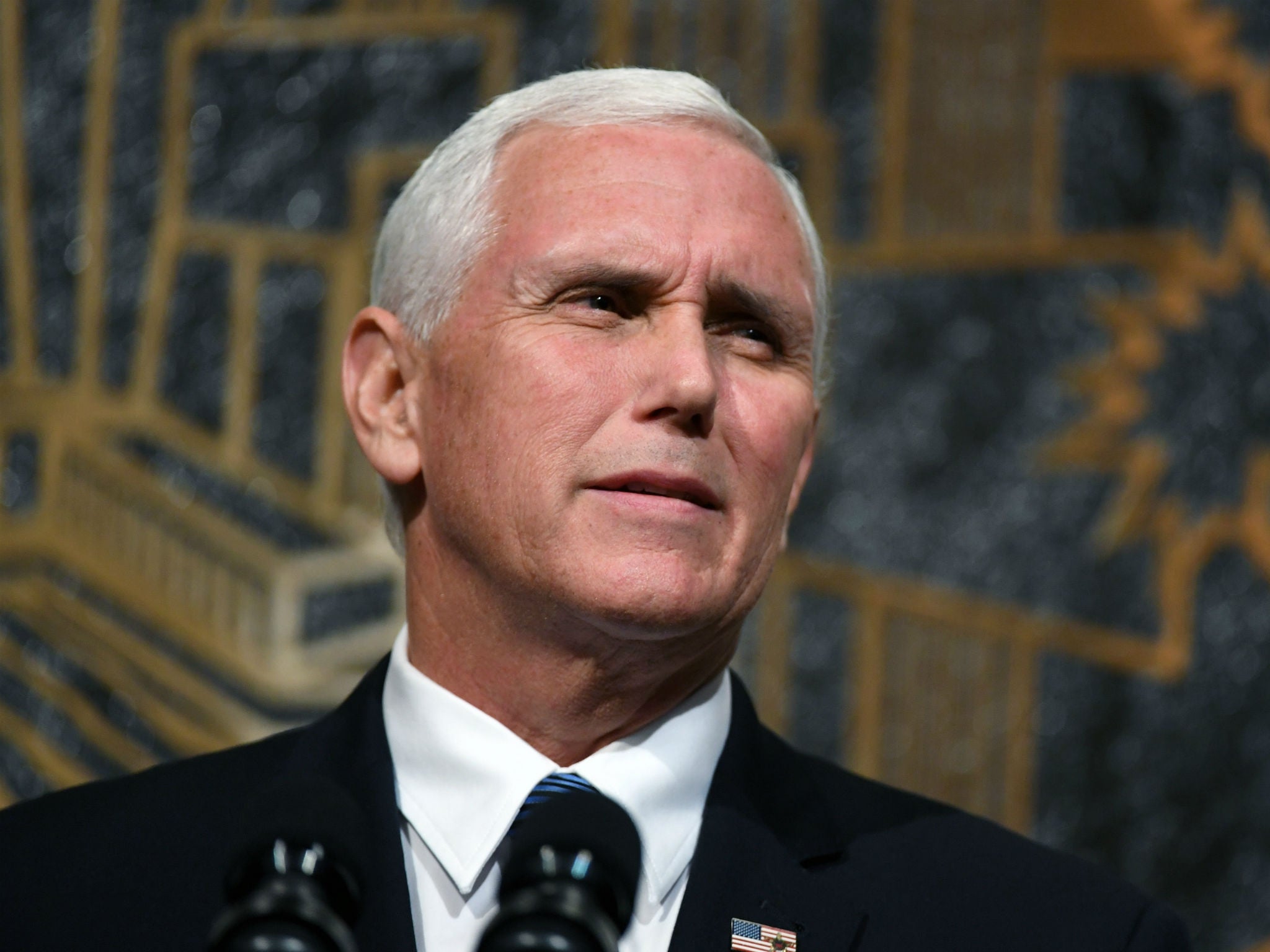A loophole in the 25th Amendment lets 14 people remove a sitting President from office
It would only take Vice President Mike Pence and 13 of President Donald Trump's 24 Cabinet members to depose him

Americans have been brushing up on their knowledge of the Constitution lately, according to Google Trends data.
The search term “25th Amendment” spiked in popularity after President Donald Trump took office, particularly after he signed the first controversial temporary travel ban on January 27.
After President John F. Kennedy was assassinated, Congress proposed and the states ratified the 25th Amendment in 1967 to formally outline the transition of power. Before that, the vice president didn't officially have the power to take over.
The amendment states that if the president dies, resigns, or is removed from office, the vice president becomes president. If there is a vacancy in the vice presidency for any reason, the president can choose someone to fill it. And if the president is unable to fulfill his duties — like when President George W. Bush was under general anaesthesia for colonoscopies in 2002 and 2007 — he can temporarily transfer his powers to the vice president, and get them back when he's done.
But Section IV is what some liberals have been frantically searching for more information on, because it could be a way to legally remove Trump from office.
A legal loophole
Under the amendment's fourth stipulation, it would only take 14 people to depose the president — Vice President Mike Pence and 13 of Trump's 24 Cabinet members.
Section IV reads:
“Whenever the Vice President and a majority of either the principal officers of the executive departments or of such other body as Congress may by law provide, transmit to the President pro tempore of the Senate and the Speaker of the House of Representatives their written declaration that the President is unable to discharge the powers and duties of his office, the Vice President shall immediately assume the powers and duties of the office as Acting President.”
John D. Feerick, former dean of Fordham Law School, is one of the chief architects of the 25th Amendment who shepherded it through Congress in the early 1960s.
He told Business Insider that the senators who signed the provision into law specified that declaring the president unfit must rely on “reliable facts regarding the president's physical or mental faculties,” not personal prejudice.
“If you read the debates, it's also clear that policy and political differences are not included, unpopularity is not included, poor judgment, incompetence, laziness, or impeachable conduct — none of that, you'll find in the debates in the congressional record, is intended to be covered by Section IV,” Feerick said.
Section IV goes on to say that if two-thirds of both houses of Congress don't vote to uphold the decision and keep the vice president in charge within 21 days, then the powers and duties automatically transfer back to the president. So if the president doesn't want to give up his office, Feerick explained, he doesn't have to if Congress agrees he shouldn't.

Akhil Reed Amar, a law and political science professor at Yale University, said in a podcast for the National Constitution Center on the topic that the president's own running mate is the one who triggers a “palace coup,” in order to maintain political stability.
“The 25th Amendment doesn’t try to specify in great detail what might count as a disability, but does try to in effect identify who and how we go about the process,” Amar said. “Here's the key point: The vice president is the pivot in the whole process. Unless the vice president puts himself — maybe one day, herself — forward, no one else can really basically, at least within the 25th Amendment framework, proclaim an unwilling president 'disabled.'”
The idea is that the Cabinet and VP are the president's closest advisers, Feerick said, so they would be the ones with the best sense of his mental faculties. They, and Congress, could also consult doctors to evaluate the president's physical and mental health in order to determine if he or she is fit for the job.
The 25th Amendment is a separate process from impeachment, which allows Congress to remove a sitting president if a majority of the House of Representatives votes that he has committed treason, bribery, or other high crimes and misdemeanors, and a trial in the Senate convicts him.
Feerick, who didn't discuss applying Section IV to Trump, said he hopes this renewed interest in the Constitution will encourage Congress to consider filling some of the legal gaps in the amendment that he and other legal scholars have proposed over the years. For example, the Constitution doesn't outline what happens if the vice president is unable to serve, and he and other experts agree that the order of succession shouldn't include members of Congress as it does today.
“It's important that people be educated about the Constitution. It's our greatest charter of liberty,” Feerick said. “I'm really happy that there's greater education going on — I'm obviously not happy about all the division in the country — but I'm happy that at least there's greater education being provided about the amendment.”
• North Border Island is New York City's post-apocalyptic playland
• How the controversial Playboy bunny role has changed over 60 years
• Teachers share 18 things parents should do for their kids
Read the original article on Business Insider UK. © 2017. Follow Business Insider UK on Twitter.
Join our commenting forum
Join thought-provoking conversations, follow other Independent readers and see their replies
Comments
Bookmark popover
Removed from bookmarks